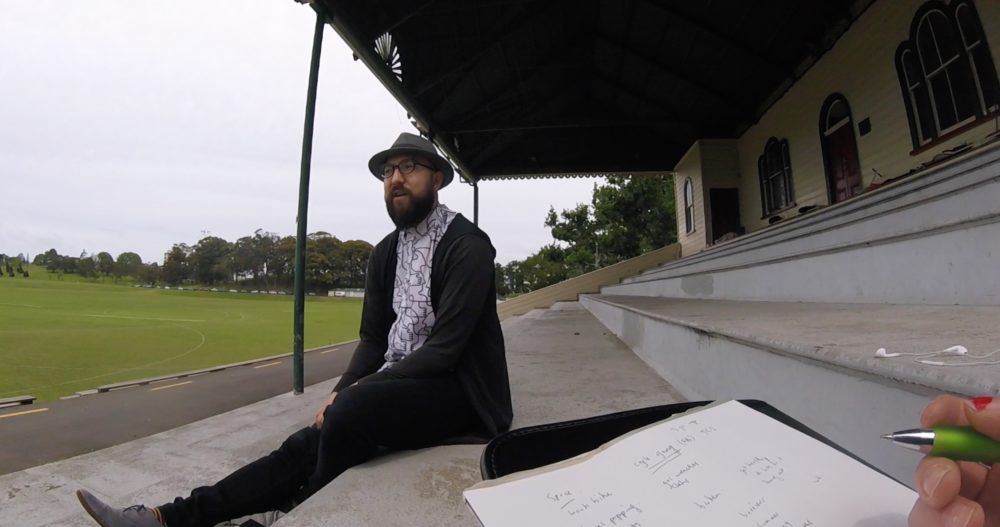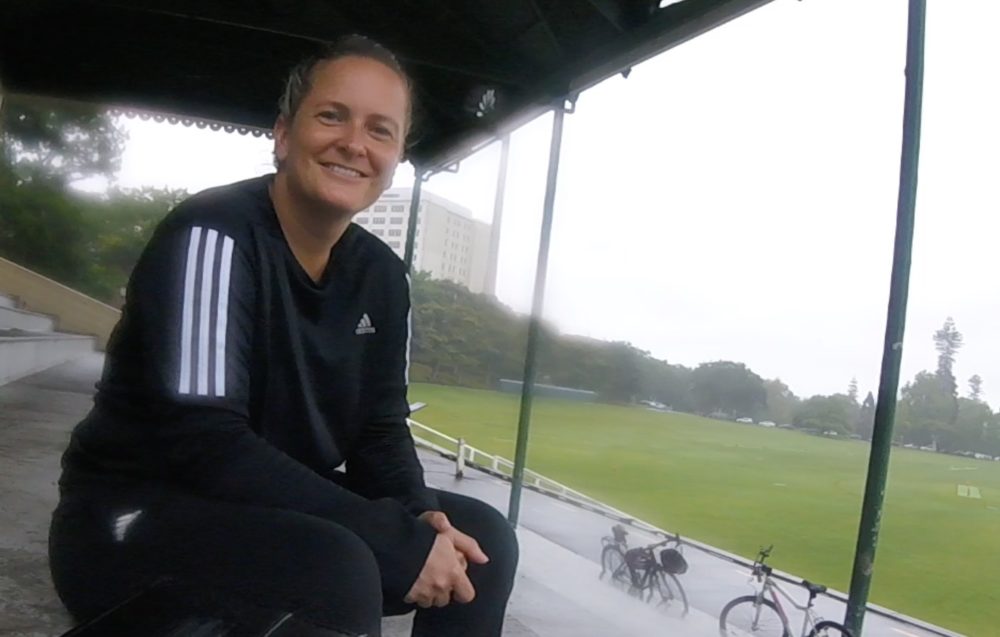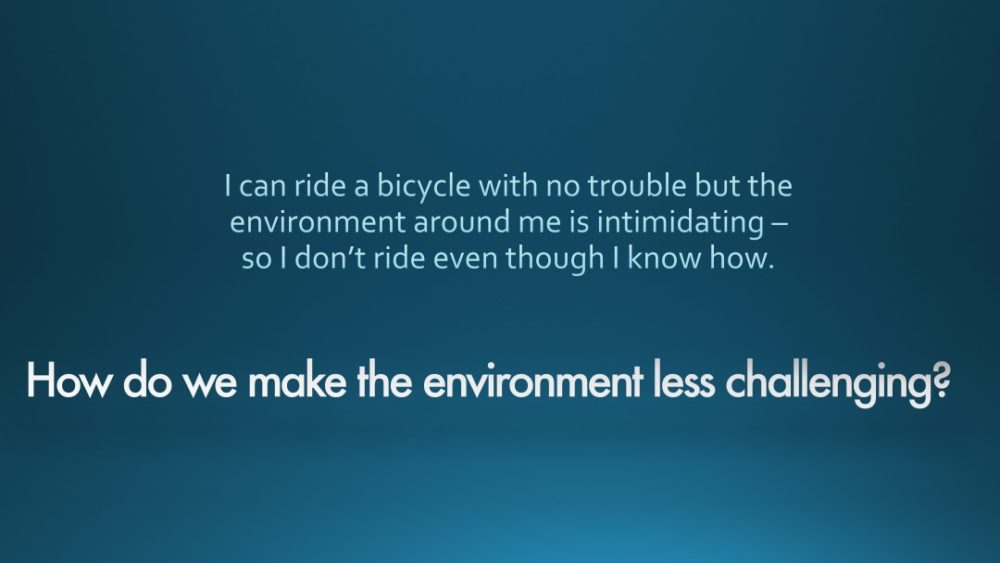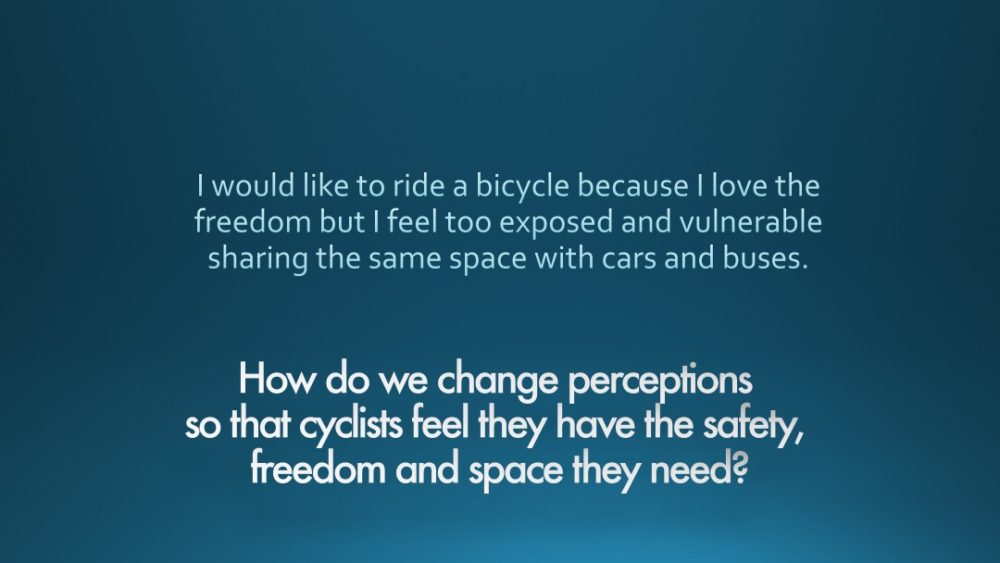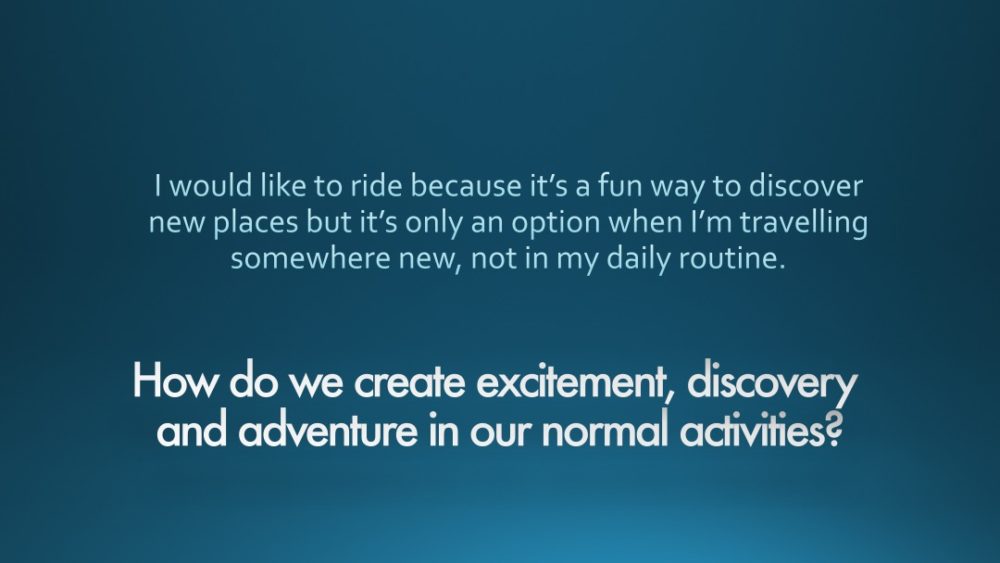Virtual Ride App
Research, storyboarding, design, prototyping & testing
As part of my Master of Creative Technologies I explored the experience of cycling in an urban environment, particularly focusing on those people who know how to ride a bicycle, but do not currently ride one. I applied human-centred design thinking, and started by asking questions: I interviewed people, letting them lead the discussion, and observed them on a bike ride through various urban environments. My aim was to identify specific pain points or opportunities, and use those to ideate concepts to address their needs.
The Goal: Encouraging Everyday Cycling
My Role
Interviews, Concept Development and Ideation, Prototype Design and Development, User Testing
Who Else Was Involved
Coding Tutor, Supervisors
Tools & Methods Used
Interviews & Observations (including a bike rid), Innovation Sourceook, Journey mapping
User Interviews & Cycling Experience
As a keen and confident cyclist, my first challenge was to shelve my pre-conceptions and listen to the interviewees. It was important for me to capture their language, emotions and interpretation of the environment, so I made sure to film the interviews for transcription so that I recorded their actual words. I also recorded the interviews and bike rides so that I could look for physical and non-verbal moments.
I learned through the interviews:
- Prior to getting on the bike, participants were likely to be very nervous, even though they all considered themselves somewhat confident riders.
- Research setup is an important factor and I needed to acknowledge that. Safety guidelines for the research meant that I rode with the participants, and I had to take that influence into account in my insights analysis. I was careful to ride apart from the riders, however, they soon visibly relaxed, more than I had expected from the pre-ride part of the interview.
- The urban cycling experience can be highly emotional. The language participants used to describe the cycling experience was far more negative prior to riding, and far more positive after the ride.
Crafting the User Story
Based on my interview analysis, I crafted user stories to understand context, user problems and motivations. These then helped me form a set of research questions:
I would like to ride a bicycle because I love the freedom… But I feel too exposed and vulnerable sharing the same space with cars and buses.
Then reshaped this as a question:
How do we change perceptions so that cyclists feel they have the safety, freedom and space they need?
I can ride a bicycle with no trouble but the environment around me is intimidating – so I don’t ride, even though I know how.
How do we make the environment less challenging?
I also gathered together all current solutions in an Innovation Sourcebook – essentially a database of solutions developed to address these problems. I categorized these into according to type (experiential, bike-related, clothing-related etc.)
Constraints and Trade Offs
My focus was on a specific type of bike rider: people who know how to ride a bike but do not. This helped me to narrow down which concepts would be most useful to explore, as I would refer back to the user story and personas.
One important constraint made a large difference to the direction my project took: I acknowledged that urban infrastructure plays an enormous role in changing people’s perceptions and confidence, and ultimately their decision to ride; however I wished to explore whether any other concepts would also influence their behaviour.
The concept under development needed to be something that could be prototyped in a short time period, restricted by the length of my course.
Concept Exploration
The next stage was to explore and ideate in different directions.
One exploration was to present a physical acknowledgement of the joy of riding: I created a billowing cape that flies up behind the bike rider as they ride. User testing revealed that riders felt more visible when riding, which improved their perception of safety. It also was a playful experience.
Another exploration was to make the environment less challenging for the initial ride through urban streets: I created a 360 video riding app linking actual street footage to a stationery bicycle to simulate riding along a local urban street. The intention was to eliminate the threat of traffic and cars, while allowing the rider to habituate themselves in as realistic an environment as possible.
The first ideation linked the pedalling to the video, however the rate remained the same regardless of whether a person was cycling uphill or downhill. User testing showed that motion and control were important, and the complete lack of vision of the actual bicycle was a challenge (the test used Google Cardboard, which takes over your complete vision). In further iterations I modified the speed to more closely match the cadence of the rider – and recommended that future versions analyzed the gradient of the route and adjust the resistance to suit.
I learned:
- Users were excited to explore the environment, and less interested in simply advancing along a predetermined route. Feedback indicated that having loose handlebars suggested more freedom than the app allowed.
- Virtual reality apps introduce new concerns over motion control. Users felt uncomfortable losing control of their vision.
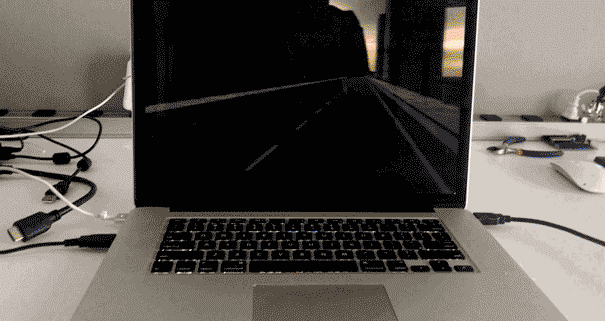
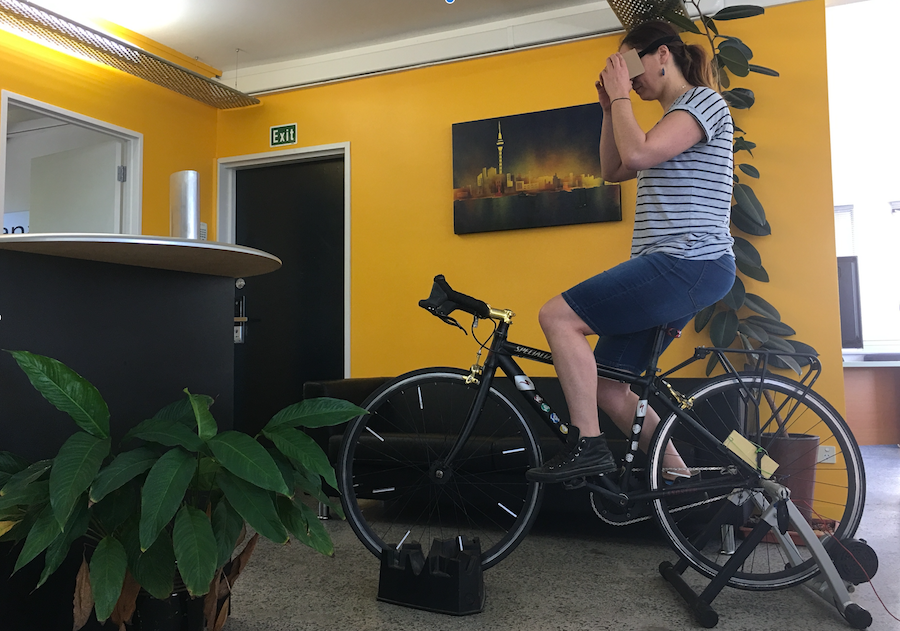
Next Steps
The ideation phase demonstrated the potential for a pre-ride virtual app; however there needs to be further development to eliminate the technological distractions: refining the resistance levels as the person cycles, using a higher resolution headset, exploring solutions that allow the rider to retain more control over their vision and the direction they cycle.


